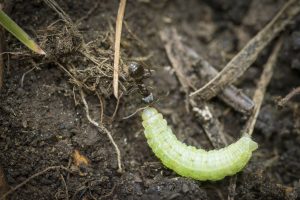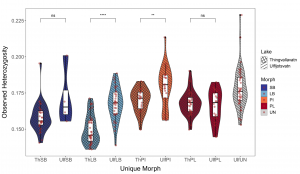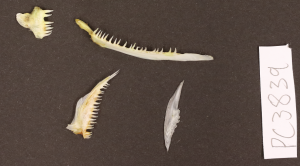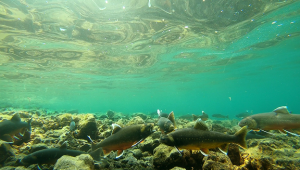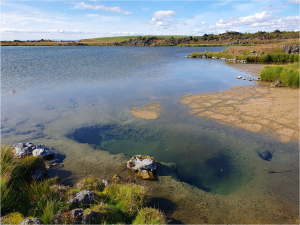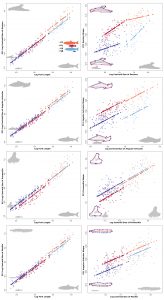Fyrir örþættina Uppástand á rás 1.
Umsjón og upptaka Jóhannes Ólafsson. Flutt 24. júní 2024.
Skilningur
Skilningur var ræddur við kvöldverðarborðið. Börnin reyndu að misskilja skilninginn, skilja misskilninginn, sundurliða skil – ninginn, inga við skilin og aðskilja skilninginn og skilningsleysið, og skemmta sér í leiðinni. Leikur að orðum, kasta þeim á milli sín, hvolfa þeim og hnoða, snúa út úr þeim og innúr, er ein dægradvöl fjölskyldunar, sem ég tel hjálpa okkur að skilja og öðlast skilning.
Samtal, þar sem skipst er á orðum, spurningar settar fram, efi læðist um og steinum velt um koll. Grín gert að orðum, og síðan grín gert að gríninu. Með öðrum orðum, við færum rök og mótrök, greinum forsendur og rætur orða. Ja hérna, spjall yfir kvöldverði var etv eins og heimspeki eða vísindi.
Forvitni, spurningar og samtal eru mikilvæg mannlegri tilveru og gefa okkur lífsfyllingu. Sálfræðingurinn Mihaly Csikszentmihalyi – höfundur bókanna Flow og Creativity sagði eitt sinni að
"Búið til fullt af hugyndum. Reynið einnig að koma með ólíklegar hugmyndir"
Í vinnunni minni við HÍ, kenni ég margvísleg viðfangsefni og rannsaka allskonar spennandi hluti. Á haustin kenni ég venjulega mannerfðafræði, nema ekki í haust af því að ráðherra og fjárveitingavaldið skáru niður framlög til háskólanna. Það má spyrja sig hversu mikinn skilning alþingi hafi á mikilvægi skilningsleitarinnar í Háskólum landsins.
Sem dæmi, í mannerfðafræði fjöllum við um áhrif erfða og umhverfis á margvíslega eiginleika mannfólks. Mikilvægasti hluti námskeiðsins eru kynningar nemenda á viðfangsefnum sem þeir velja sér, allt frá erfðum klumbrufóts, sögu þjóða eyjaálfu og breytileika í byggingu erfðamengja manna. Viðfangsefnin sjálf eru mikilvæg, en mestu skiptir er að nemendur þjálfist í vísindalegu samtali. Tökum þessa tvö viðfangsefni fyrir.
Nemendur spyrja hvaða þættir hafa áhrif á tiltekið einkenni? Hvort vegur meira erfðir eða umhverfi, og hversu sterk eru áhrif tilviljunarinnar? Oft er hugsað um erfðafræði sem leitina að genum sem móta einhverjar eiginleika, hversu margir erfðaþættir og hvernig eru áhrif þeirra? En fyrir mörg einkenni eru áhrif umhverfisþátta sterkari og tilviljun mjög mikilvæg. Þau áhrif er aftur á móti erfitt að greina og skilgreina, sérstaklega miðað við erfðabreytileika. Breytileika í genum er auðvelt að mæla, með því að keyra lífsýni (DNA úr blóði) í gegnum stórkostleg apparöt, og greina þær milljónir staða í erfðamenginu sem eru breytilegir. Ekkert sambærilegt tæki dugar til að mæla allt umhverfi sem við hrærumst í. Hversu mörg epli höfum við borðað yfir ævina, hversu margar sýkingar fengum við, hvaða sýkingar og hvenær. Sultum við í bernsku eða urðum fyrir öðru áfalli? Nemendurnir fjalla um slíkar spurningar í kringum viðfangsefni sín.
En þau spyrja líka um eðli þekkingarinnar og þess sem ekki er vitað.
Þau lesa greinar og ræða við sérfræðinga, og reyna að ná utan um viðfangsefnin. (tekst mjög vel í flestum tilfellum). Þau spyrja; Hvað er vitað um sjúkdóm X? Hversu traustar eru þær upplýsingar? Hvernig var þeirra þekkingar aflað? Er önnur túlkun á gögnunum möguleg? Hvaða eiginleika hefur aðferðin sem var notuð ? Kosti galla, bjaga. Þetta er áþekkt kvöldverðar samtalinu sem við ræddum áðan, spurt er um forsendur og röksemdir, rökflæði, rök og mótrök sett fram, gæði þeirra og gallar metnir.
Sjálfsöryggi og sannfæringarkraftur er ekki mikilvægasti kostur vísindafólks. Það er nóg af sannfærandi fólki með vísindamenntun, sem hefur aukið á misskilning mannfólks frekar en skilning. Má til með að vísa í umfjöllun Veru Illugadóttir um lækninn Andrew Wakefield sem leiddi til víðtæks misskilnings um eðli og áhættur af bólusetningum. Mikilvægt er að viðhafa varfærni og hófsemi í ályktunum. Það er mjög gefandi að sjá nemendur byggja upp hæfileika sína á þessum sviðum. Maður vonar auðvitað að þeirra persónulega leit að þekkingu og skilningi haldi áfram eftir útskrift, hvort sem þau fari formlega menntabraut eða leit á aðrar slóðir.
Mihaly Siksentmihaly – lagði einmitt áherslu á að allir geta öðlast lífsfyllingu með því að spyrja spurninga og kafa í málin, leita að skilningi.
Ég ljúka þessum pistli á annari tilvitnun í hann:
„Ef þú hefur áhuga á einhverju, þá veitiru því athygli
Og ef þú veitir einhverju athygli, þá er líklegt að þér muni finnast það áhugavert.
Margt af því sem okkur finnst áhugavert er það ekkert endilega í sjálfu sér, heldur vegna þess að við lögðum það á okkur að veita því athygli.“
Athygli er gjaldmiðill mannslegs samfélags, sérstaklega í nútíma. Vonandi var þessi pistill nógu áhugaverður fyrir hlustendur, eða a.m.k. vakti áhuga ykkar á því að hafa áhuga á einhverju. Og leiða þannig til skilnings.

